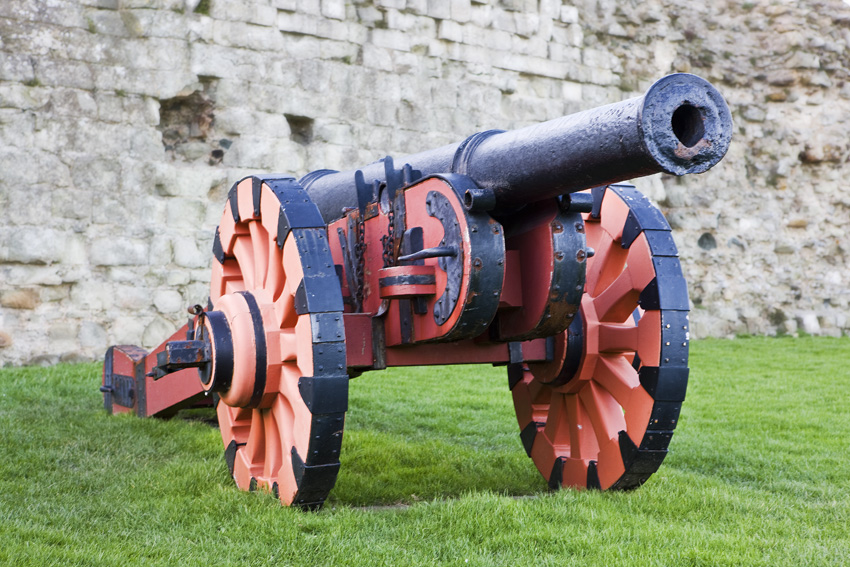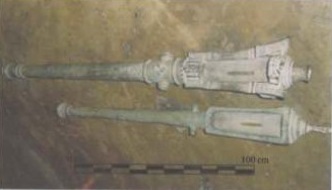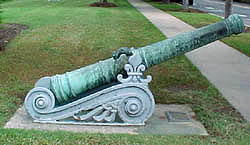|
HMS Sedgemoor (1687)
HMS ''Sedgemoor'' was a 50-gun fourth rate ship of the line of the Kingdom of England, English Royal Navy, launched at Chatham Dockyard in May 1687.Lavery, Ships of the Line vol.1, p162. One of only three 50-gun ships to be built during James II of England, James II's brief reign (all three completed with an unusual "square tuck" stern), she was first commissioned on 5 May 1687 under Captain David Lloyd, who was still in command (although actually ashore in Dover) when she was wrecked twenty months later. Armament All three ships ordered in 1682/3 (all were launched in 1687) were intended to carry 54 guns each - twenty-two 24-pounders on the lower deck, the same number of demi-culverins (9-pounders) on the upper deck, and ten demi-culverin Drake (cannon), drakes on the quarterdeck. However, each was completed with just 50 guns in wartime service; ''Sedgmoor'' actually carried twenty culverins (18-pounders) on the lower deck and thirty Saker (cannon), sakers (6-pounders) on the u ... [...More Info...] [...Related Items...] OR: [Wikipedia] [Google] [Baidu] |
Kingdom Of England
The Kingdom of England (, ) was a sovereign state on the island of Great Britain from 12 July 927, when it emerged from various Anglo-Saxon kingdoms, until 1 May 1707, when it united with Scotland to form the Kingdom of Great Britain. On 12 July 927, the various Anglo-Saxon kings swore their allegiance to Æthelstan of Wessex (), unifying most of modern England under a single king. In 1016, the kingdom became part of the North Sea Empire of Cnut the Great, a personal union between England, Denmark and Norway. The Norman conquest of England in 1066 led to the transfer of the English capital city and chief royal residence from the Anglo-Saxon one at Winchester to Westminster, and the City of London quickly established itself as England's largest and principal commercial centre. Histories of the kingdom of England from the Norman conquest of 1066 conventionally distinguish periods named after successive ruling dynasties: Norman (1066–1154), Plantagenet (1154–1485 ... [...More Info...] [...Related Items...] OR: [Wikipedia] [Google] [Baidu] |
English Red Ensign 1620
English usually refers to: * English language * English people English may also refer to: Peoples, culture, and language * ''English'', an adjective for something of, from, or related to England ** English national identity, an identity and common culture ** English language in England, a variant of the English language spoken in England * English languages (other) * English studies, the study of English language and literature * ''English'', an Amish term for non-Amish, regardless of ethnicity Individuals * English (surname), a list of notable people with the surname ''English'' * People with the given name ** English McConnell (1882–1928), Irish footballer ** English Fisher (1928–2011), American boxing coach ** English Gardner (b. 1992), American track and field sprinter Places United States * English, Indiana, a town * English, Kentucky, an unincorporated community * English, Brazoria County, Texas, an unincorporated community ... [...More Info...] [...Related Items...] OR: [Wikipedia] [Google] [Baidu] |
Fourth Rate
In 1603 all English warships with a compliment of fewer than 160 men were known as 'small ships'. In 1625/26 to establish pay rates for officers a six tier naval ship rating system was introduced.Winfield 2009 These small ships were divided into three tiers, Fourth, Fifth and Sixth rates. Up to the end of the 17th century the number of guns and the compliment size was adjusted until the rating system was actually clarified. A 'Fourth Rate' was nominally a ship of over thirty guns with a complement of 140 men. In the rating system of the Royal Navy used to categorize sailing warships in the 18th century, a fourth-rate was a ship of the line with 46 to 60 guns mounted. They were phased out of ship of the line service during the French Revolutionary and Napoleonic Wars, as their usefulness was declining; though they were still in service, especially on distant stations such as the East Indies. ''Fourth-rates'' took many forms, initially as small two decked warships, later as la ... [...More Info...] [...Related Items...] OR: [Wikipedia] [Google] [Baidu] |
Ship Of The Line
A ship of the line was a type of naval warship constructed during the Age of Sail from the 17th century to the mid-19th century. The ship of the line was designed for the naval tactic known as the line of battle, which depended on the two columns of opposing warships maneuvering to volley fire with the cannons along their broadsides. In conflicts where opposing ships were both able to fire from their broadsides, the opponent with more cannons firingand therefore more firepowertypically had an advantage. Since these engagements were almost invariably won by the heaviest ships carrying more of the most powerful guns, the natural progression was to build sailing vessels that were the largest and most powerful of their time. From the end of the 1840s, the introduction of steam power brought less dependence on the wind in battle and led to the construction of screw-driven wooden-hulled ships of the line; a number of purely sail-powered ships were converted to this propulsion ... [...More Info...] [...Related Items...] OR: [Wikipedia] [Google] [Baidu] |
Full-rigged Ship
A full-rigged ship or fully rigged ship is a sailing vessel's sail plan with three or more masts, all of them square-rigged. A full-rigged ship is said to have a ship rig or be ship-rigged. Such vessels also have each mast stepped in three segments: lower mast, top mast, and topgallant mast. Other large, multi-masted sailing vessels may be regarded as ships while lacking one of the elements of a full-rigged ship, e.g. having one or more masts support only a fore-and-aft sail or having a mast that only has two segments. Masts The masts of a full-rigged ship, from bow to stern, are: * Foremast, which is the second tallest mast * Mainmast, the tallest * Mizzenmast, the third tallest * Jiggermast, which may not be present but will be fourth tallest if so If the masts are of wood, each mast is in three or more pieces. They are (in order, from bottom up): * The lowest piece is called the ''mast'' or the ''lower''. * Topmast * Topgallant mast * Royal mast, if fitted On steel-ma ... [...More Info...] [...Related Items...] OR: [Wikipedia] [Google] [Baidu] |
Royal Navy
The Royal Navy (RN) is the United Kingdom's naval warfare force. Although warships were used by Kingdom of England, English and Kingdom of Scotland, Scottish kings from the early medieval period, the first major maritime engagements were fought in the Hundred Years' War against Kingdom of France, France. The modern Royal Navy traces its origins to the early 16th century; the oldest of the British Armed Forces, UK's armed services, it is consequently known as the Senior Service. From the middle decades of the 17th century, and through the 18th century, the Royal Navy vied with the Dutch Navy and later with the French Navy for maritime supremacy. From the mid 18th century, it was the world's most powerful navy until the World War II, Second World War. The Royal Navy played a key part in establishing and defending the British Empire, and four Imperial fortress colonies and a string of imperial bases and coaling stations secured the Royal Navy's ability to assert naval superiority ... [...More Info...] [...Related Items...] OR: [Wikipedia] [Google] [Baidu] |
Chatham Dockyard
Chatham Dockyard was a Royal Navy Dockyard located on the River Medway in Kent. Established in Chatham in the mid-16th century, the dockyard subsequently expanded into neighbouring Gillingham (at its most extensive, in the early 20th century, two-thirds of the dockyard lay in Gillingham, one-third in Chatham). It came into existence at the time when, following the Reformation, relations with the Catholic countries of Europe had worsened, leading to a requirement for additional defences. Over 414 years Chatham Royal Dockyard provided more than 500 ships for the Royal Navy, and was at the forefront of shipbuilding, industrial and architectural technology. At its height, it employed over 10,000 skilled artisans and covered . Chatham dockyard closed in 1984, and of the Georgian dockyard is now managed as the Chatham Historic Dockyard visitor attraction by the Chatham Historic Dockyard Trust. Overview Joseph Farington (1747-1821) was commissioned by the Navy Board to ... [...More Info...] [...Related Items...] OR: [Wikipedia] [Google] [Baidu] |
James II Of England
James VII and II (14 October 1633 16 September 1701) was King of England and King of Ireland as James II, and King of Scotland as James VII from the death of his elder brother, Charles II, on 6 February 1685. He was deposed in the Glorious Revolution of 1688. He was the last Catholic monarch of England, Scotland, and Ireland. His reign is now remembered primarily for conflicts over religious tolerance, but it also involved struggles over the principles of absolutism and the divine right of kings. His deposition ended a century of political and civil strife in England by confirming the primacy of the English Parliament over the Crown. James succeeded to the thrones of England, Ireland, and Scotland following the death of his brother with widespread support in all three countries, largely because the principles of eligibility based on divine right and birth were widely accepted. Tolerance of his personal Catholicism did not extend to tolerance of Catholicism in general, and ... [...More Info...] [...Related Items...] OR: [Wikipedia] [Google] [Baidu] |
Demi-culverin
The demi-culverin was a medium cannon similar to but slightly larger than a saker and smaller than a regular culverin developed in the late 16th century. Barrels of demi-culverins were typically about long, had a calibre of and could weigh up to . It required of black powder to fire an round shot A round shot (also called solid shot or simply ball) is a solid spherical projectile without explosive charge, launched from a gun. Its diameter is slightly less than the bore of the barrel from which it is shot. A round shot fired from a la ... (though there were heavier variants firing or round shot). The demi-culverin had an effective range of . Demi-culverins were valued by generals for their range, accuracy and effectiveness. They were often used in sieges for wall and building demolition. References Cannon {{artillery-stub ... [...More Info...] [...Related Items...] OR: [Wikipedia] [Google] [Baidu] |
Drake (cannon)
A wide variety of gunpowder artillery weapons were created in the medieval In the history of Europe, the Middle Ages or medieval period lasted approximately from the late 5th to the late 15th centuries, similar to the post-classical period of global history. It began with the fall of the Western Roman Empire a ... and early modern period. List Bibliography * Artillery: An Illustrated History of Its Impact, Jeff Kinard. * English Civil War Artillery 1642-51, Chris Henry, 2005, Osprey: Oxford. * Science and Civilisation in China: Military technology: The gunpowder epic, Joseph Needham References Lists of artillery Early Modern weapons Medieval artillery Gunpowder {{DEFAULTSORT:Medieval and early modern gunpowder artillery ... [...More Info...] [...Related Items...] OR: [Wikipedia] [Google] [Baidu] |
Culverins
A culverin was initially an ancestor of the hand-held arquebus, but later was used to describe a type of medieval and Renaissance cannon. The term is derived from the French "''couleuvrine''" (from ''couleuvre'' "grass snake", following the Latin ''colubrinus'' "of the nature of a snake".) From its origin as a hand-held weapon it was adapted for use as artillery by the French in the 15th century, and for naval use by the English in the 16th century. The culverin as an artillery piece had a long smoothbore barrel with a relatively long range and flat trajectory, using solid round shot projectiles with high muzzle velocity. Hand culverins The hand culverin consisted of a simple smoothbore metal tube, closed at one end except for a small touch hole designed to allow ignition of the gunpowder. The tube was attached to a wood or metal extension which could be held under the arm. It was loaded with gunpowder and lead bullets and fired by inserting a burning slow match ... [...More Info...] [...Related Items...] OR: [Wikipedia] [Google] [Baidu] |
Saker (cannon)
The saker was a medium cannon, slightly smaller than a culverin, developed during the early 16th century and often used by the English. It was named after the saker falcon, a large falconry bird native to the Middle East. A saker's barrel was approximately 9.5 ft (2.9 m) long, had a calibre of 3.25 inches (8.26 cm), and weighed approximately 1,900 lb (860 kg). It could fire round shot weighing 5.25 lb (2.4 kg) approximately 2,400 yards (2.3 km) using 4 lb (1.8 kg) of black powder. The shot was intended to bounce along the ground to cause as much damage as possible, the explosive shell being rare before the 19th century. Tests performed in France during the 1950s show that a saker's range was over 3,000 yards (2.7 km) when fired at a 45-degree angle. Henry VIII amassed a large arsenal of sakers in the early 16th century as he expanded the Royal Navy and came into conflict with France. Henry's foundries used so much ... [...More Info...] [...Related Items...] OR: [Wikipedia] [Google] [Baidu] |

_-_02.jpg)






